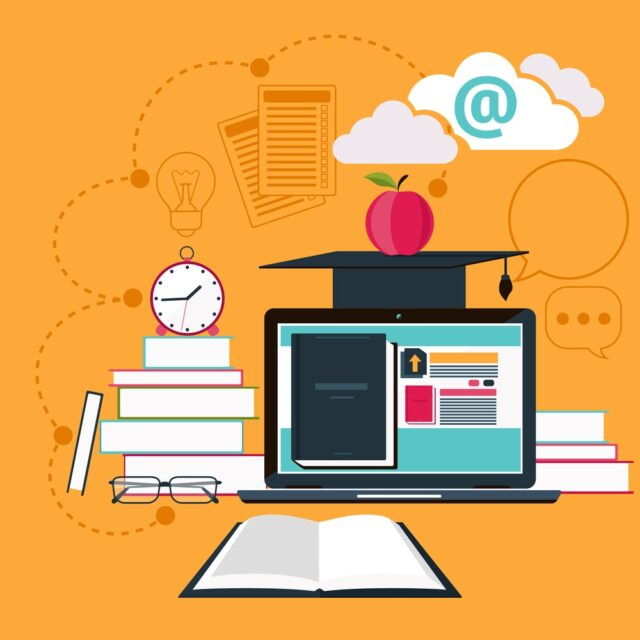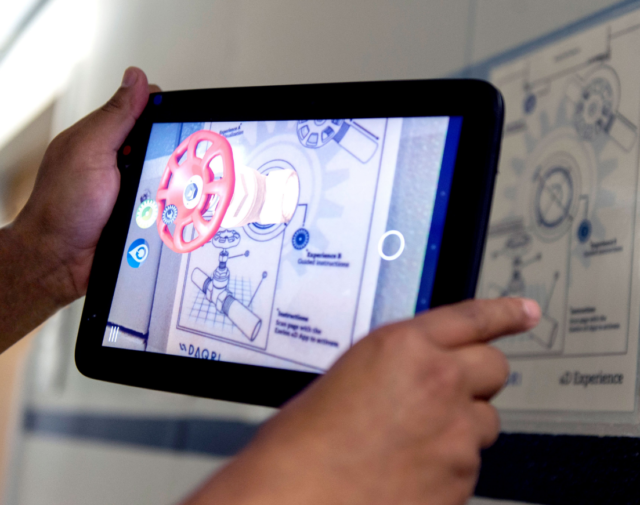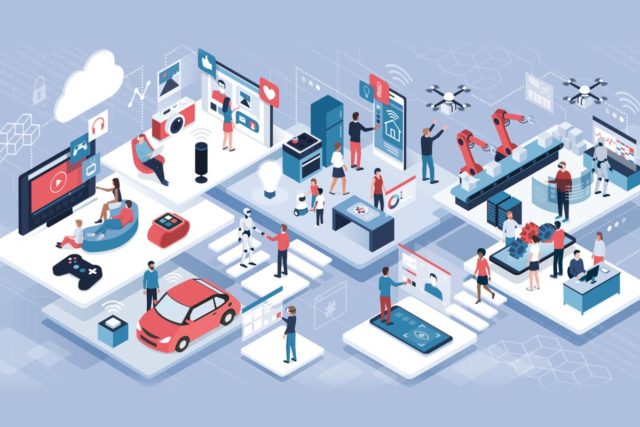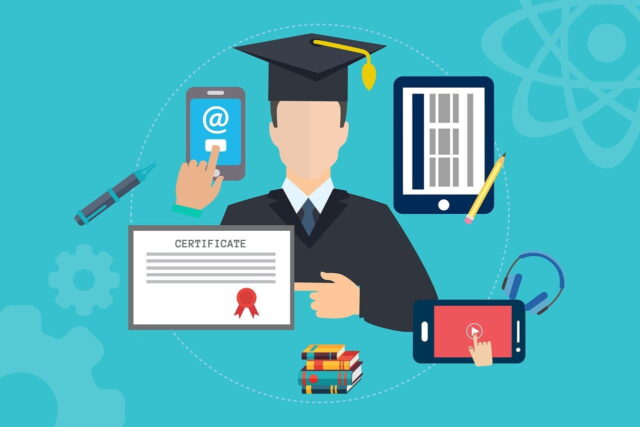
It’s amazing how new technologies impact every part of our lives, including education. One of the greatest benefits of online learning today is that it makes education more accessible than ever. What are the top 5 new technologies that have the largest impact on online teaching and are changing it for the better? How can today’s teachers implement these new features and technologies in their lessons and methods?
Even many of the more traditional educational institutions have been forced to turn to online learning as a means to continue their work. Online education is nothing new but is increasing in popularity and necessity. Even as the global COVID-19 pandemic winds down, it still has a direct impact in revolutionizing learning norms for countless numbers of students using online learning programs. Students trying online learning for the first time will face some challenges, though there are also just as many benefits. Revolutionizing learning norms through online education looks to be as much part of “the new normal” as it does to be just some necessary or temporary fix during the coronavirus crisis. The implementation of online learning offers us some interesting glimpses into the future of online education. Check it out this helpful resource – COVID-19 Pandemic Revolutionizing Learning Norms.
1. Welcome to the Virtual Classroom

One of the main factors that have made online teaching and learning possible is the virtual classroom. The rapid development of different technologies has made it possible to create online teaching platforms like VEDAMO where tutors and students have everything they need for a fulfilling study experience. And, by “everything,” I mean everything – from personal one-on-one interactions in real-time to classes with an online whiteboard packed with interactive features and tools for presentations and tutoring, to using separate virtual spaces for teamwork or solo studying.
The virtual classroom offers limitless possibilities to make online teaching more fun, interesting, effective and inspiring. Thanks to the latest technologies and the cloud computing trend, the virtual classroom is very easy to use on different devices and from any location in the world that has an internet connection. Online studying offers more possibilities than ever for a more adaptive and personalized experience for students. The latest trends in online education allow for new twists to the roles of tutors and students in the virtual classroom. Online teachers not only relay knowledge to students but also encourage them to be more involved in the learning process and participate in content creation.
Will the virtual classroom replace the traditional classroom? Probably not in the immediate future, but there is a growing trend in online education to embrace hybrid learning methods that combine online teaching with traditional classes.
2. Taking visual learning to the next level – virtual reality

The implementation of virtual reality (VR) in online teaching is taking the visual experience of students to the next level. VR has become more and more accessible over the past few years. It is without a doubt one of the most powerful tools in online teaching and creates immersive lessons on many different subjects. VR creates visual stimulation and even emotionally engages students to have the most fulfilling learning experience.
VR can enrich online lessons on various topics and subjects like history, for example. Imagine teaching a lesson on Ancient Greece with the ability to present students with an immersive experience of the architecture and the atmosphere of this historical period. More and more training programs include VR in their lessons to present students with real-life scenarios and experiences in a safe and controlled environment.
3. Immersive learning – the era of augmented reality

Both VR and augmented reality (AR) are giving a new face to modern ways of learning. Studying is no longer limited to memorizing and understanding the lessons. Thanks to AR, students get the chance to dive deeper into the learning material by truly immersing themselves in the environment. The level of understanding of the lessons is higher than ever before. AR is used in online teaching as well as in hybrid education programs in combination with other technologies, features, and methods. AR enables students to observe and study the subjects and processes in the smallest details in a fully safe and controlled environment.
The idea behind AR is a combination of technology and real-world environment and data. One of the best ways to implement AR is through apps on smartphones. Teachers can present 3D models, historical lessons, etc. to make the learning material easier to understand. In many training programs, AR allows students to scan a certain picture or text and receive more information on the subject in the form of an audio recording, teacher comments, or even video. The use of AR in online teaching has proven to be effective in explaining abstract topics and theoretical concepts, like Math for example.
4. Learning is Smart

One of the most obvious advantages of using modern technologies in online teaching and education is the Internet of Things. It is based on the concept of the broader connections between today’s smart devices. Both teachers and students benefit from the ability to interact, exchange information, and easily access the database that they use in real-time. The Internet of Things (IoT) connects smart devices to simplify studying from anywhere in the world at any time. It increases the level of student engagement and interest. The smart learning environment provides tutors with more tools and capabilities (like mobile apps, software, etc.) to create a more efficient and immersive studying experience for their students. Big advantages of modern technologies is the fact that you can also find help when you need it. Websites such as essaywriter.org are providing great help when it is needed.
One of the greatest benefits of the IoT is the fast and efficient collection of data. Teachers can easily create assignments, send them to students via apps, and get the data collected, sorted, and even analyzed through apps. The implementation of the IoT saves tutors a lot of time and allows them to focus on the more creative part of teaching. The tools provided by the IoT are great for more efficient studying outside of school, special education, and much more.
5. Artificial intelligence in online teaching

Last, but not least, the arrival of artificial intelligence (AI) is a true game-changer in education. The development of AI educational software is creating the most personalized learning experience for every student. It provides the easiest access to the necessary information with interactive features that correspond to a student’s interests and way of learning. AI has a huge potential for one-on-one online teaching, as well as for a more effective self-paced studying experience.
The advancements in technology focus on learning patterns and preferences in learning behavior to create a unique environment and recommendations for students. Some of the capabilities in the latest AI software enable students to ask questions through both picture and voice input and get immediate and accurate answers. Students have many tools at their fingertips to use the most preferable learning methods for them and can even break the lessons into micro lessons.
What are the benefits of AI in online teaching? Modern software enables tutors to track student progress and provide help and support when needed. Teachers can adjust their lessons and methods to adapt the learning material to student preferences and interests to achieve better results.
With AI teachers can address issues and problems in the very early stages of the learning process and make changes according to the individual needs of every student. One of the goals of the integration of AI in online teaching is to decrease the amount of administrative work for teachers. Tutors will have more time and resources to focus on creating a customized learning experience for students instead of spending hours on assessments, etc.
One of the strongest benefits of AI in education is an increase in personalized learning. The best example I can give is the way Netflix works. The user’s specific preferences, interests, and choices create a unique blend of recommendations for the most fulfilling user experience. Students can easily access the information they need on various topics. The recommendations are based on their preferred way of learning – videos, text, audio, etc.
Conclusion

New technologies in online teaching and education are breaking the limits of time and space for learning. Today, both students and teachers have more opportunities to create the most personalized study environment with more immersive lessons, effective interactions, and a better understanding of the learning material. Automation in education saves time and effort on ordinary tasks like taking notes, conducting assessments, creating databases, etc. and provides the educators with more opportunities to focus on making learning more interesting, effective, and engaging for every student.












